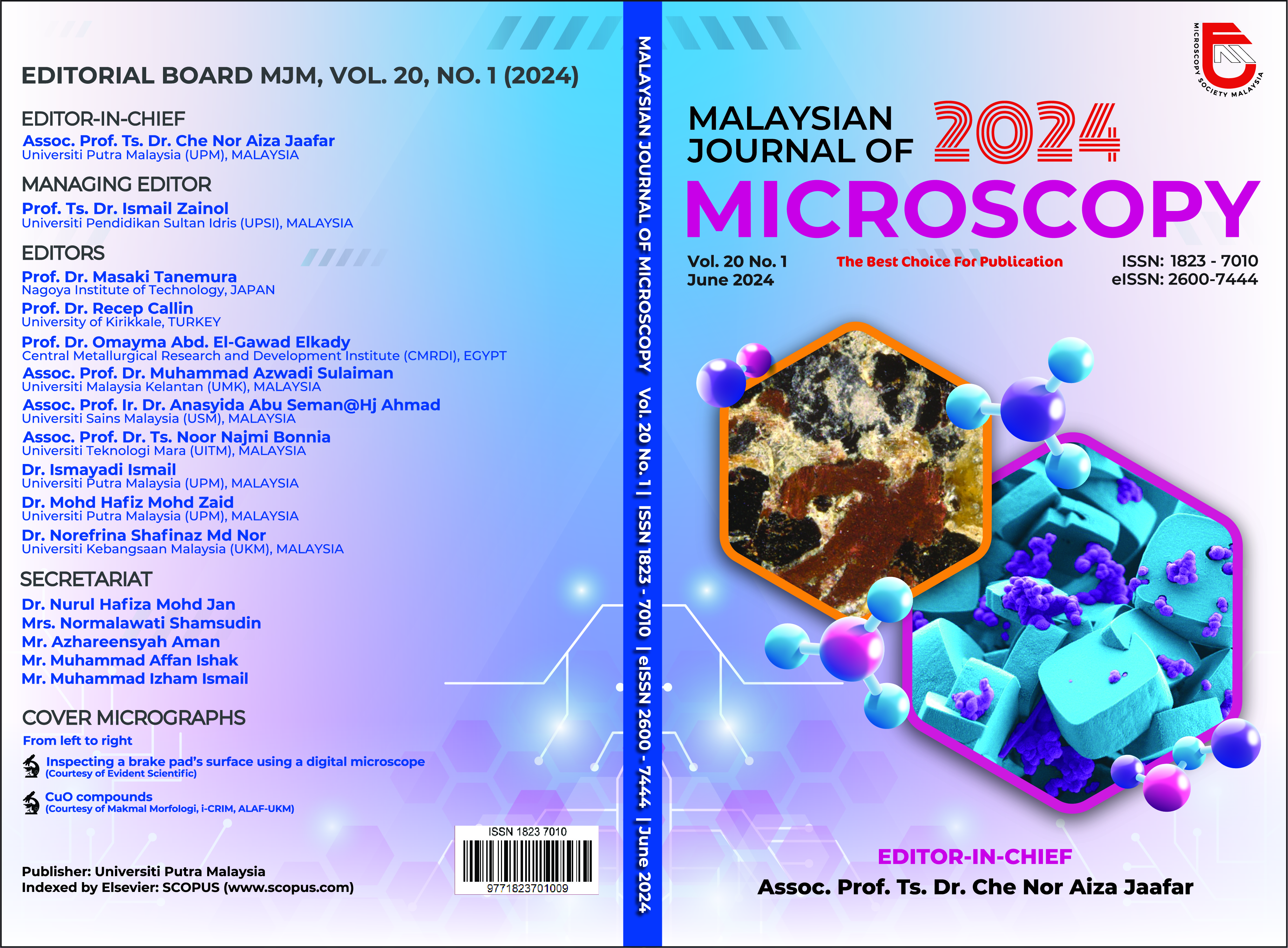EFFECT OF MANGANESE DOPANT ON THE STRUCTURE AND ELECTRICAL PROPERTIES OF POTASSIUM SODIUM NIOBATE THIN FILM
Abstract
This research paper presents a comprehensive investigation into the synthesis and characterization of manganese (Mn)-doped potassium sodium niobite (KNN) thin films with different concentration of manganese starting from 0.1%, 0.3%, 0.5%, 0.7% and 0.9% prepared via the sol-gel method. The introduction of Mn dopants with different concentrations into KNN thin films offers a pathway to further enhance their performance. The Mn-doped KNN thin films were synthesized using the chemical solution deposition method, a versatile technique known for its ability to produce uniform, high quality films. X-ray diffraction (XRD) analysis was employed to investigate the crystalline structure of the Mn-doped KNN thin films. The XRD analysis results show that the fabrication of Mn-doped KNN thin films exhibit an orthorhombic crystal structure. XRD peaks show that the occupancy of KNN thin films which indicate the synthesis was successfully done. Field-emission scanning electron microscopy (FESEM) was employed to examine the surface morphology and microstructure of the thin films. 0.5% Mn-doped KNN thin films show the best result of a uniform grain size and dense grain growth. The electrical properties of the Mn-doped KNN thin films were evaluated through resistivity measurements. Resistivity analysis showed that 0.3% Mn-doped KNN thin films have the lowest resistivity among the other concentrations.


